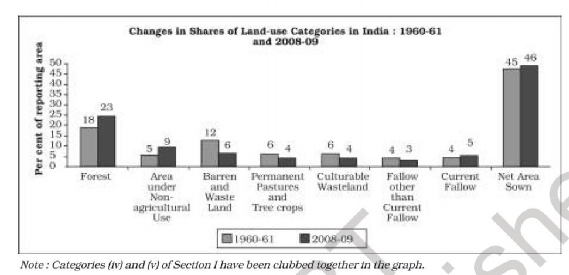1.2. Land-use Changes in India
Land-use in a region, to a large extent, is influenced by the nature of economic activities carried out in that region. However, while economic activities change over time, land, like many other natural resources, is fixed in terms of its area. The pattern of land use depends on the economy of the region. With the increase in size of the economy, due to increasing population, change in income level, and updated technology, the pressure on the land increases many folds. Hence, marginal land also comes under usage. Also, with the change in composition of economy, brisk rate of growth of secondary and tertiary sector, there is gradual shift of land from agricultural usage to non-agricultural usage. But, it has been observed that though the share of agricultural land decreases with time, the pressure on land does not decrease. It is so

2 Gross Cropped Area: This represents the total area sown once and/or more than once in a particular year, i.e. the area is counted as many times as there are sowings in a year. This total area is also known as total cropped area or total area sown.
because the number of people that the agricultural sector has to feed is increasing day by day.
India has undergone major changes within the economy over the past four or five decades, and this has influenced the land-use changes in the country. It has been observed that share of area under forest, area under non-agricultural uses and current fallow lands have shown an increase.
The rate of increase is the highest in case of area under non-agricultural uses. This is due to the changing structure of Indian economy, which is increasingly depending on the contribution from industrial and service sectors. Thus, the area under non-agricultural uses is increasing at the expense of wastelands and agricultural land.
Barren and wasteland, culturable wasteland, area under pastures and tree crops and net area sown have shown a decline in the areas. With the pressure on land increasing, wastelands and culturable wastelands have declined. Also, putting more area under the non-agriculture usage has caused a decline in net sown areas.

